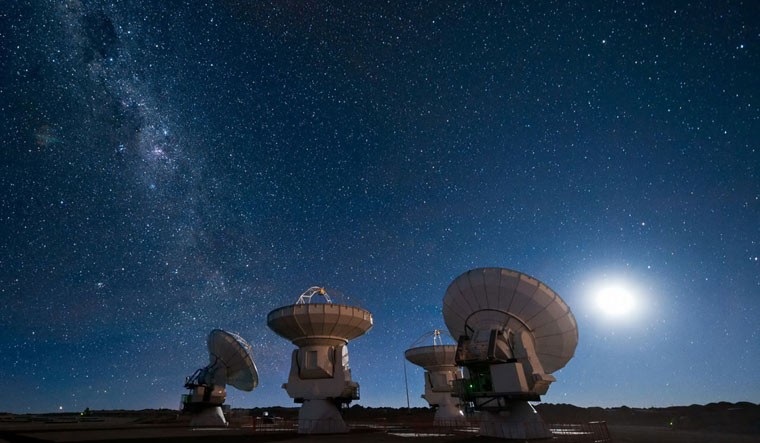
Scientists have developed an automated system that uses artificial intelligence (AI) to detect and capture fast radio bursts (FRBs), which originate from very powerful sources on the other side of the universe.
The system, described in the journal Monthly Notices of the Royal Astronomical Society, has already identified five bursts—including one of the most energetic ever detected, as well as the broadest. The new system is capable of capturing signals hailing from a distant galaxy in real-time.
Wael Farah from Swinburne University of Technology trained the on-site computer at the Molonglo Radio Observatory in Australia to recognise the signs and signatures of FRBs, and trigger an immediate capture of the finest details seen to date.
FRBs are mysterious and powerful flashes of radio waves from alien galaxies thought to originate billions of light years from the Earth, said researchers from Swinburne University of Technology in Australia.
Researchers, who were observing deep-space signals from 2001, detected the first FRB in 2007. These incredibly brief transmissions last for only a few milliseconds or a thousandth of a second and their cause is one of astronomy's biggest puzzles. Researchers at the California Institute of Technology had picked a single radio burst back to its home nearly 8 billion light-years away.
FRBs can potentially be used to study matter around and between galaxies that is otherwise almost impossible to see, Farah said.
The bursts were detected within seconds of their arrival at the Molonglo Radio Telescope, producing high quality data that allowed the researchers to study their structure accurately, and gather clues that may lead to zero in on its source.
"It is fascinating to discover that a signal that travelled halfway through the universe, reaching our telescope after a journey of a few billion years, exhibits complex structure, like peaks separated by less than a millisecond," he said.
"Molonglo's real-time detection system allows us to fully exploit its high time and frequency resolution and probe FRB properties that were previously unobtainable," said Australian Research Council Laureate Fellow and project leader Professor Matthew Bailes.

No comments:
Post a Comment